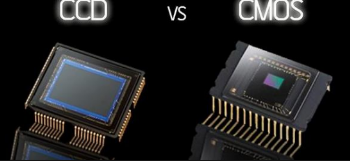
Much has been written about the relative advantages of CMOS versus CCD imagers. It seems that the debate has continued on for as long as most people can remember with no definitive conclusion in sight. It is not surprising that a definitive answer is elusive, since the topic is not static. Technologies and markets evolve, affecting not only what is technically feasible, but also what is commercially viable.
Imager applications are varied, with different and changing requirements. Some applications are best served by CMOS imagers, some by CCDs.
A core component of security cameras, CCD and CMOS image sensors have in the last few years parted ways in terms of applications and characteristics, sensitivity, noise reduction, and energy consumption. At the same number of pixels, CCD sensors have outperformed CMOS sensors in sensitivity; CCD sensors also take in more light than CMOS sensors of the same size.
In real-world applications, however, CMOS sensors deliver the same level of performance as their CCD counterparts in low-light cameras. This makes CMOS sensors the preferred image sensor for HD cameras.
What to Look for in a CMOS Sensor:
In theory, CCD sensors allow a higher resolution than CMOS sensors of the same size. In practice, image sensor suppliers overcome this simply by making larger image sensors since security cameras do not have space constraints.
Major image sensor suppliers for the security market like Aptina, Omnivision, Sony, and Sharp, use this advantage to continue to enhance the performance of CMOS image sensors.
Currently, most HD cameras on the market use 1/1.8”, 1/2.5”, 1/2.7” or 1/2.8” image sensors. By testing IP megapixel cameras on the market, it is possible to find a CMOS sensor that is practical in both price and performance.
It would be naive to assume that business decisions are based on performance trade-offs alone. What matters more to many business decision-makers is value, or the performance received for the price paid….
Source: teledynedalsa.com
